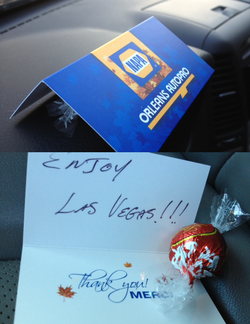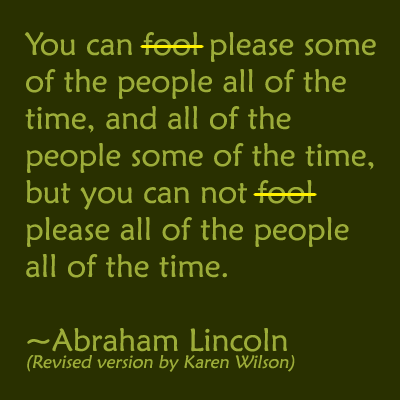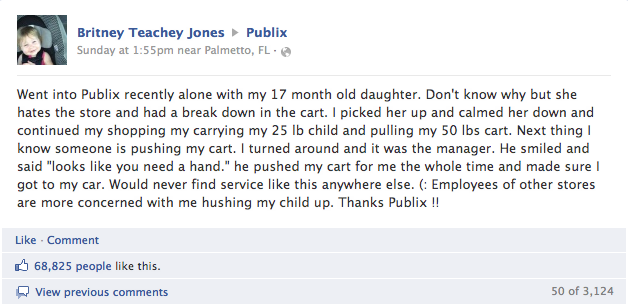Who doesn't want this?
Last week, Lara wrote about how you can invite your customers to tell their story. Taking this step may be slightly anxiety-inducing if you’re worried about what people will say. However, when your business is delivering high-quality and meeting the needs of clients and customers, the risk is minimal.
Customers who support your business and have a relationship with you or your organization will be happy to spend some time making recommendations. And, though some pretty sensationally bad customer service situations get a lot of attention, those instances truly are the exception to the rule. Even most complaints don’t make it onto the Internet.
There are two really good reasons to ask your clients and customers to talk about you:
- If they feel strongly enough to say something - positive or negative - they are more likely to talk about you with or without a prompt.
- Ask and you shall receive. It’s not always top of mind to relay a positive experience with a business. By asking, you’ve brought it to mind in the context of the positive.
THREE BENEFITS OF ASKING
I recently liked my chiropractor’s Facebook Page (Dr. Surbjit Herr). Within a day or two, I received an email from his assistant thanking me for liking the page and asking me to post a review. (Very smart tactic…hint, hint.) So I did! It was actually a very easy step, because I’ve been talking about Dr. Herr to anyone who will listen for nearly a year. However, I hadn’t thought to post anything online, so I’m really glad his assistant asked.
How many of your customers might have a similar story?
You will get access to your customers’ and clients’ network of friends, family, and associates.
We all know and influence different people. When I post about the experience I’ve had with Dr. Herr, my network will see it and (since I’ve been actively encouraging a few friends to go to him anyway) someone may finally take the plunge because of comments I’ve made in such a public place.
You’ll find out (sometimes surprising) things that are important to your clients and customers.
Every business puts a certain effort into delivering service in the way that they feel will be well-received by patrons. However, some of the little touches can mean a whole lot. For example, Dr. Herr ends each of my son’s adjustments by telling him to close his eyes. While Brandon’s eyes are closed, Dr. Herr gets a bottle of bubbles and gets ready. Brandon covers his eyes with a huge smile on his face and waits for Dr. Herr to tell him to open his eyes. He gets such a kick out of popping the bubbles and he plays along with the “surprise” even though he knows it’s coming. The trust and affection my son openly shows Dr. Herr makes me feel good about taking him for treatment.
When your clients and customers are willing to talk about you, it increases your credibility to those who don’t yet know you.
It’s easy to go to a grocery store and hand over money for things you need. The trust required is small. However, maybe your business (like mine) requires trust in a concept that invites skepticism. Or, perhaps your business (like Dr. Herr’s) requires a level of personal interaction and information that may be uncomfortable for some. Seeing the testimonials of others who have had a positive experience can help overcome doubt and uncertainty.
YOUR TURN!
I challenge you to talk about one great experience with a business. Tell us in the comments who they are (share links if you can!) and why the experience you had was so positive - or post an online review for that business and then share the link with us. Then go and ask at least 5 of your own customers or clients to do the same for you!







